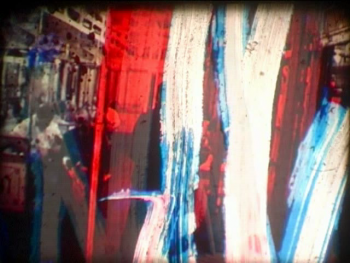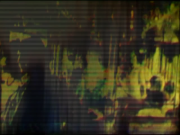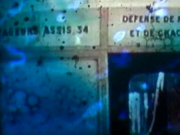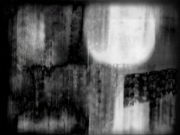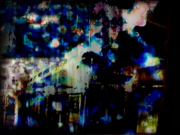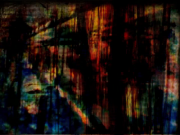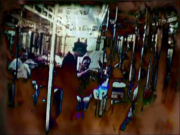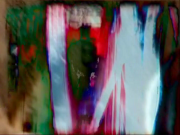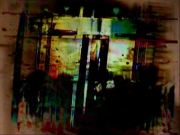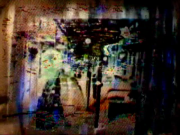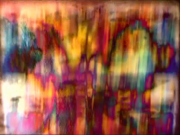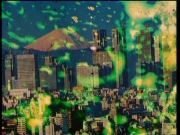- Maurice Lemaître
Maurice Bismuth est né en avril 1926. Son père, d'origine tunisienne, quitte son pays vers 1923-1924 et s'installe à Paris pour y fonder une famille.
Le jeune Maurice rate son examen d'entrée à l'Ecole des Arts et Métiers et préoare son bac au moment de la Libération.
Dès la fin de la guerre, Maurice Bismuth écrit son premier article sur la composition de l'air dans la revue L'homme et l'architecture, fondée par Le Corbusier qui conçoit, à cette période, sa célèbre "cité radieuse" à Marseille.
Malgré l'admiration qu'il voue alors à cet artiste de renom dont il connaît bien la trajectorie, ayant étudié précédemment l'architecture, Maurice Bismuth est insatisfait et cherche sa voie.
En ces années d'après-guerre, il existe à Paris une nébuleuse d'intellectuels où se côtoient des surréalistes — "bretonniens" — des spiritualistes, des hindouistes et des anarchistes. C'est ainsi que le jeune homme rencontre, à peu près en même temps, des membres de la fédération anarchiste et des proches, voire des adhérents, de la communauté pacifiste fondée par Lanza del Vasto.
Le futur artiste décide de changer son patronyme et adopte le nom de jeune fille de sa mère, "Lemaître". (...)
o FRÉDÉRIQUE DEVAUX. Le cinema lettriste (1951-1991). Paris Expérimental, 1992.
***
- Ganeden, 2003
"I thought I would at first offer you a simple lesson - sorry, you don't like being preached to - so let's say a little advice, which of course you are not obliged to follow, well, let's say a tip ...which calls upon us to first explore the steps that were cleared by our predecessors, since it was out of the question for me to remake the new geographical landscapes of the Romantics: Rousseau, Goethe, Chateaubriand or the Naturalist descriptions of places that were miserable or picturesque, of Eugène Sue or Victor Hugo, or Dada trips to regions without any particular interest, or also the random objective encounters of the Surrealists, and of course, the travels of the explorer Amerigo Vespucci ...I found accounts of travel that were extraordinary, imaginary, marvelous, utopian, exotic, fantastic explorations, etc."
Trying to encapsulate the texturally complex, amorphous, and indefinable essence of Maurice Lemaître's film Ganeden is a daunting task. On the surface, the film - evocatively named after the Hebrew word for the Garden of Eden - is a highly experimental, yet approachable anti-travelogue exposition on the imaginative adventure of mundane travel (or, in de-romanticized terms, the daily commute), an instinctively cohesive journey that strikes a sympathetic chord with Robert Breer's wordless, stream-of-consciousness animated work Fuji, and that appropriately opens with a similar illustrative image of a figurative point of departure - the train station - in this case, appearing in the form of a still (or more accurately, paused) image of a man frozen in mid step of boarding a train from a subway station platform. However, the film also represents the culmination of the iconic Lettrist novelist, poet, artist, and filmmaker's body of work: a creative philosophy that his groundbreaking film, Le film est déjà commencé? would prefigure in its tongue-in-cheek usurpation and cataclysmic (or at the very least, cacophonic) dismantling of the hallowed and rarefied experience of mid century cinema by upending such conventional notions of screen, projection, ambient sound, and artist performance. Intrinsic in this subversive aesthetic - and in particular, Lemaître's evocation of urban escapism - is its empirical evolution from the Lettrist concept of psychogeography, a consciousness of an environment's effects on an individual's psyche. It is within this philosophical imperative that the artistic struggle becomes a broader cultural revolution to transfigure the malleable landscape of the modern city into a more vital organism of inspiration and creation - to humanize it: the city re-imagined as an integrated artistic canvas of tangible, accessible art and uncharted wonderland of quixotic adventure (as Jacques Rivette would whimsically capture the Situationist concept of dérive - a Lettrist splinter faction - in such films as Le Pont du Nord or Celine and Julie Go Boating), moving away from the automated machinery of dehumanized production and towards a state of perpetual metamorphosis and source of creative reinvigoration.
In this respect, the Lettrist ideal of re-asserting the human element into the industrial landscape - and consequently, propelling the creative stimulus of the individual - by reinventing the familiar into novel forms - a detournement - converges with the artistic philosophy of seminal Austrian experimental filmmaker Peter Kubelka, not only in his practical reconstitution of found film, but also in the discretization of sound from images in order to reconstruct new layers of meaning and signification. However, while Kubelka's aesthetic is integrally rooted in the unique properties and physical materiality of celluloid - and in particular, its projected speed - Lemaître's aesthetic is rooted in a more atemporal mixed media of traditional and contemporary visual art forms: film and video, photography and sketch drawing, digital post-production effects and hand painting, live footage and animation. In essence, while the principle of reductive, self-imprint governs both filmmakers' body of work, Lemaître's aesthetic is revealed through the multilayered juxtaposition of compositions - a creative methodology that is not propelled by the compact delivery of information dynamically presented at 24 frames per second (as is the case with Kubelka's cinema, where images are often presented liminally at the threshold of registered visibility), but rather, by the conflation of discrete layers of information revealed through the density of images, in their resulting hypergraphy.
In Ganeden, this hypergraphy is manifested though the juxtaposition of iconic, if quotidian images - building and infrastructural architecture, train car views, cityscapes, harbors, identification markings, and informational signage - that define the urban landscape. But beyond the transfiguration of mundane images into works of art, Lemaître's inspired act of self-imprint - his humanization of the "dehumanized city" - is ingeniously manifested through his incorporation of an inconstant, mutable artistic style throughout the film that, when superimposed against the sequence of manipulated urban images, becomes a contextual survey of several key art movements: from Primitivism (the linear figures riding the train), to Pointillism (the speckled opening sequence), to Impressionism (the lateral shot of a modern bridge painted wispily in a color palette that evokes Claude Monet's Japanese Bridge at Giverny), to Post-Impressionism (the garishly fluorescent, Van Gogh styled re-coloration of the Eiffel Tower), to Dada (the overlaid chiseling on the iconic image of Mount Fuji), to Abstract (the compositions of saturated color blocks and instinctual geometries), and Pop Art (the alternating negative and positive photographic image of an Asian woman). Ironically, in contrast to the alienating, subversive chaos of Le film est déjà commencé?, what emerges in Lemaître's personal and cultural journey through the evolution of art history is an assimilative aesthetic that remains reverent towards its foundational roots even as it seeks, not to push the bounds of the disparate art forms, but rather, to collapse the imaginary frontiers that separate them - to return to a unitary ideal - a Garden of Eden.
Fuente: Notes on the Cinema Stylographer.
***
DVDRip publicado en Cine-Clásico...
Código: Seleccionar todo
File Name .........................................: Ganeden__Maurice_Lemaître_-_2003__DVDRip.avi
File Size (in bytes) ............................: 510,335,910 bytes
Runtime ............................................: 16:46.082
Video Codec ...................................: XviD 1.1.2 Final
Frame Size ......................................: 640x480 (AR: 1.333)
FPS .................................................: 29.970
Video Bitrate ...................................: 3932 kb/s
Bits per Pixel ...................................: 0.427 bpp
B-VOP, N-VOP, QPel, GMC.............: [B-VOP], [], [], []
Audio Codec ...................................: 0x0055 MPEG-1 Layer 3
Sample Rate ...................................: 48000 Hz
Audio Bitrate ...................................: 111 kb/s [2 channel(s)] VBR
No. of audio streams .......................: 1Enlace
Subtítulos
Castellano


